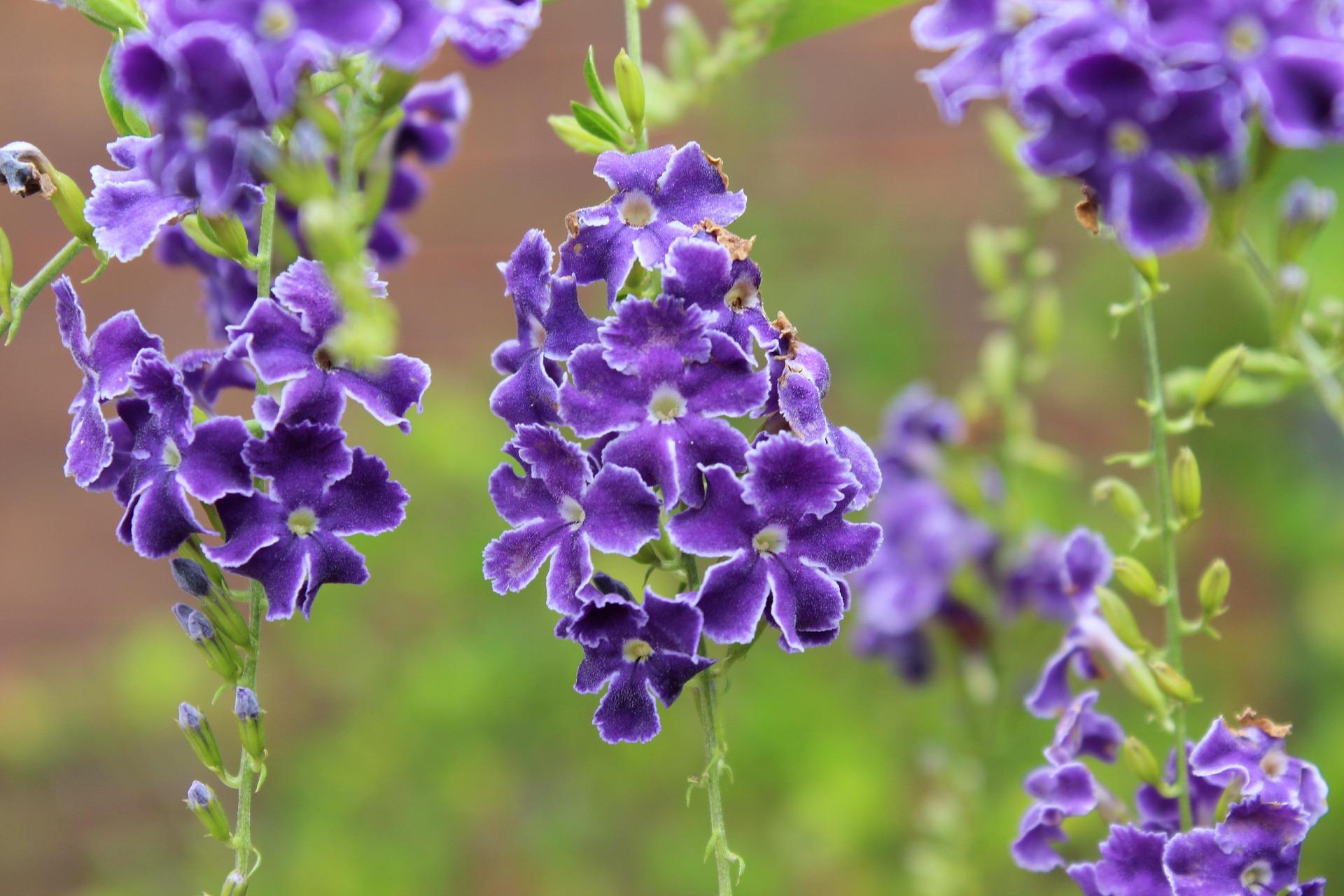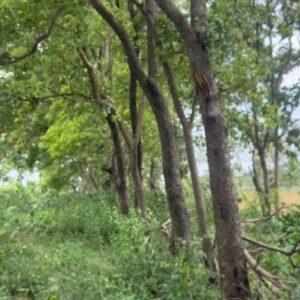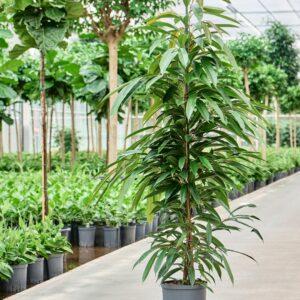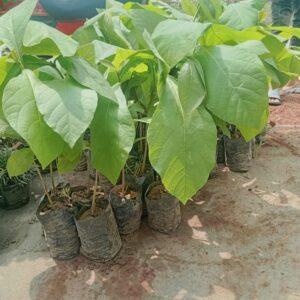Duranta erecta
Duranta erecta, commonly known as Golden Dewdrop, Skyflower, or Pigeon Berry, is a striking ornamental plant admired for its cascading clusters of vibrant purple or blue flowers, golden-yellow foliage (in some varieties), and bright orange berries. Native to the Americas, it’s widely grown across tropical and subtropical regions as a hedge, shrub, or small tree. With its fast growth, lush foliage, and showy blossoms, Duranta is a favorite in both home gardens and landscape projects.
Whether trained as a topiary, a flowering shrub, or left to grow naturally, Duranta erecta adds color, texture, and structure to outdoor spaces year-round.
🌿 General Description
Botanical name: Duranta erecta (also known as Duranta repens)
Common names: Golden Dewdrop, Skyflower, Pigeon Berry, Geisha Girl (specific variety)
Plant type: Evergreen shrub or small tree
Height: 6–20 feet (can be pruned to desired height)
Spread: 4–10 feet
Flowers: Purple, violet, lavender, or blue, often edged with white
Fruit: Small, golden-orange berries (toxic if ingested)
Foliage: Green to golden-yellow (depending on variety)
💧 Watering Routine
Duranta is relatively drought-tolerant once mature but thrives with consistent watering during the growing season.
Young plants: Water 2–3 times a week until well established (first 6–8 weeks).
Established plants: Water once a week during dry periods. In cooler months or rainy seasons, reduce watering.
Container-grown plants: May need more frequent watering (every 2–3 days in summer). Check that the top inch of soil is dry before rewatering.
Avoid overwatering: Ensure well-draining soil to prevent root rot, especially in pots.
Mulching around the base helps retain moisture and regulate soil temperature.
🌡️ Temperature and Light Requirements
Duranta thrives in warm, sunny climates and needs full sun (at least 6 hours daily) to flower well.
Ideal temperature: 20–35°C (68–95°F)
Hardiness zones: USDA zones 9–11
Frost sensitivity: Sensitive to frost—should be protected or brought indoors in colder climates.
In cooler regions, it can be grown as an annual or container plant that is overwintered indoors.
🌱 Soil and Fertilizer Needs
Duranta prefers fertile, well-draining soil but adapts to a range of soil types.
Preferred pH: Slightly acidic to neutral (6.0–7.5)
Soil type: Loamy, sandy, or moderately clayey with good drainage
Fertilizer Schedule:
Spring: Apply a balanced slow-release fertilizer (e.g., 10-10-10 or 12-6-6) to support new growth.
Summer: Supplement with liquid fertilizer every 4–6 weeks for continuous flowering.
Fall and winter: Stop feeding as the plant enters dormancy in cooler climates.
Too much nitrogen may encourage foliage over flowers, so a balanced or bloom-boosting fertilizer works best.
✂️ Maintenance and Pruning
Duranta is a fast grower and requires regular maintenance to keep it tidy and flowering:
Prune in late winter or early spring to control shape and size.
Deadhead spent flowers to encourage repeat blooming.
Trim aggressively if using as a hedge or topiary—responds well to hard pruning.
Remove suckers or unwanted stems growing at the base.
Be cautious when pruning as the plant can have sharp thorns along its stems, especially older growth.
🌸 Propagation Methods
Duranta can be easily propagated from seeds or stem cuttings:
Stem Cuttings (preferred):
Take semi-hardwood cuttings 4–6 inches long.
Dip in rooting hormone and plant in moist potting mix.
Keep in a warm, humid place—roots should form in 3–4 weeks.
Seeds:
Collect seeds from mature, dried berries (handle with care—berries are toxic).
Soak seeds overnight before sowing in nursery soil.
Germination is slow and less reliable than cuttings.
⚠️ Toxicity Warning
The berries and foliage of Duranta erecta are toxic to humans and pets if ingested.
Keep the plant out of reach of children and animals, especially in fruiting season.
🌼 Landscaping Uses
Duranta is extremely versatile in garden design:
Hedge or privacy screen
Accent plant or focal point in sunny garden beds
Container specimen for patios or balconies
Attracts butterflies and bees with its nectar-rich flowers
Ideal for tropical, Mediterranean, or cottage-style gardens
Popular cultivars include:
‘Gold Mound’ – bright yellow foliage
‘Geisha Girl’ – ruffled purple flowers
‘Sapphire Showers’ – profuse lavender blooms
✅ Conclusion
Duranta erecta is a vibrant, fast-growing shrub that adds color and texture to any sunny garden. With proper watering, regular pruning, and moderate feeding, it rewards gardeners with months of blooms and decorative berries. Its versatility—whether used as a low hedge, container plant, or flowering backdrop—makes it a reliable and stunning addition to tropical and subtropical landscapes.”





Reviews
There are no reviews yet.